Reading Practical Tips from 4 Years of Traveling The World — written by a woman who is doing just that — makes me want to travel again soon. Not only is it a good thumbnail sketch of some useful how-tos, but there’s a travel philosophy that underlies the pointers that I’ve very sympathetic to.
Tip No. 4, “Everything else you can buy,” brought to mind a demonstration of this that Oliver and I experienced on a visit to Wolfsburg, Germany two years ago.
We were staying at the youth hostel, and I’d forgotten to check to see if they provided towels or not. Turns out that they didn’t.
Now Oliver and I are both more prone to practical-detail-freakouts than your average person (just ask Catherine) so this was a chance both to test the “everything else you can buy” theory and also a good chance for us to address our own freakitudic tendencies head-on.
It turns out that everything else you can buy: we simply found our way to the Müller department store our first night after supper (fringe benefit: an opportunity to wander around the city looking for the Müller department store) and bought a towel. If memory serves it cost less than $5.00. And it served us well for the next couple of days.
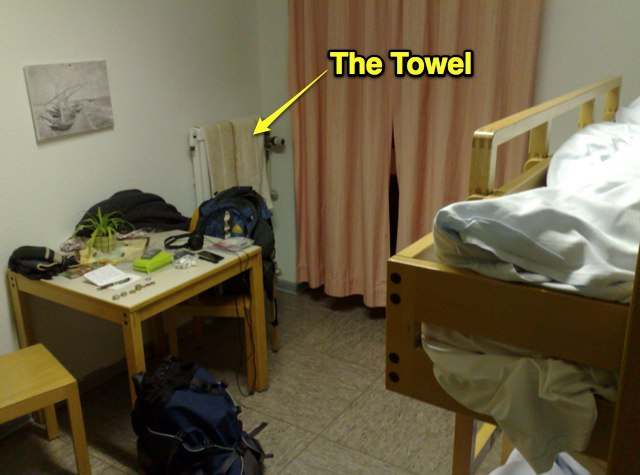
The only thing, in my experience, that I must absolutely not forget is plug adapters: for some reason they are almost impossible to find in Europe. I’m sure there’s a place where everyone goes, and that they are easy to find, but I haven’t figured that out yet.
Otherwise, we’ve had great adventures looking for Nintendo DS chargers (we’ve done that twice, as the one we purchased on trip one was forgotten on trip two), Tylenol (“avez-vous de la Paracetamol?”), hand cream (“un chose pour enlever les main avec de l’eau?”), myriad umbrellas (Portugal, France, Thailand, Germany), and portable hard drives. In all cases, there’s often been as much or more adventure attached to the “looking around” as in the “finding.”
Here’s a bit of office life-hacking that’s been working out for me: on the office windowsill I have our newly-acquired schefflera arboricola plant sited beside our newly-acquired in-office water jug ($3.00 at Sobeys). Every morning I come into the office, pour the plant a glass of water, and then pour one for myself. Not only does the water-plant-glass proximity aid in remembering to do this, but the everpresent “plants need water to live, and so do people” message reinforces my goal of staying hydrated at the office.
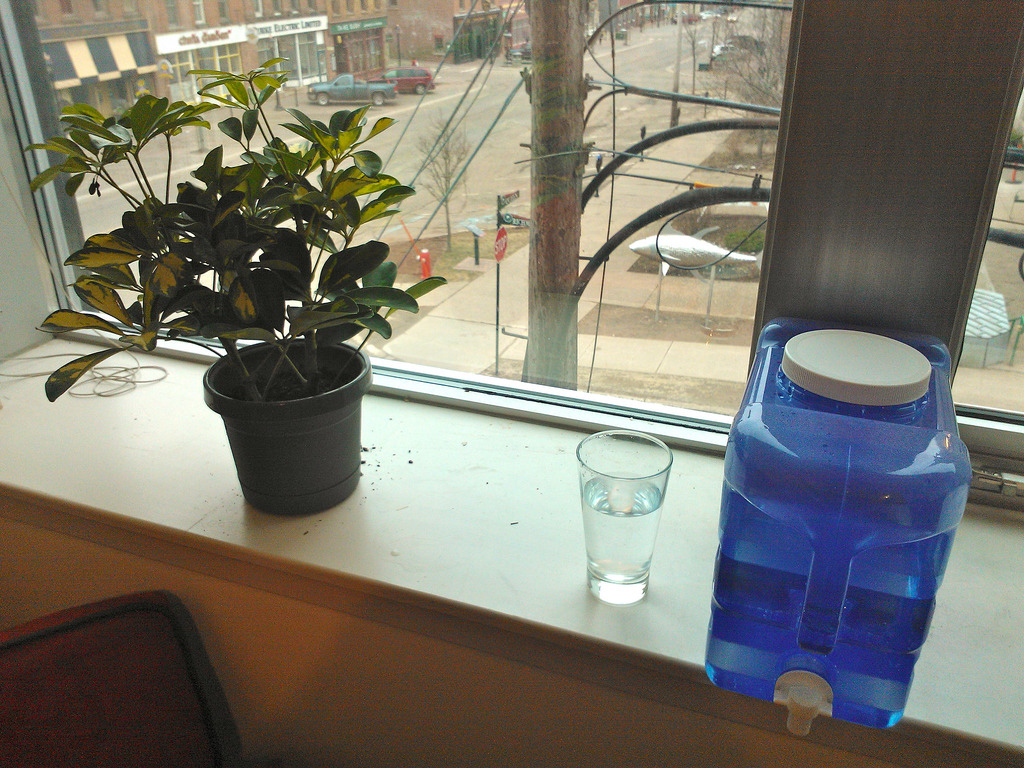
I’ve been running Latitude Auto-Update on my Nokia Lumia 800 for the last month: it sends my current location to Google Latitude every 30 minutes. Here’s the last 14 days of my location on a map:
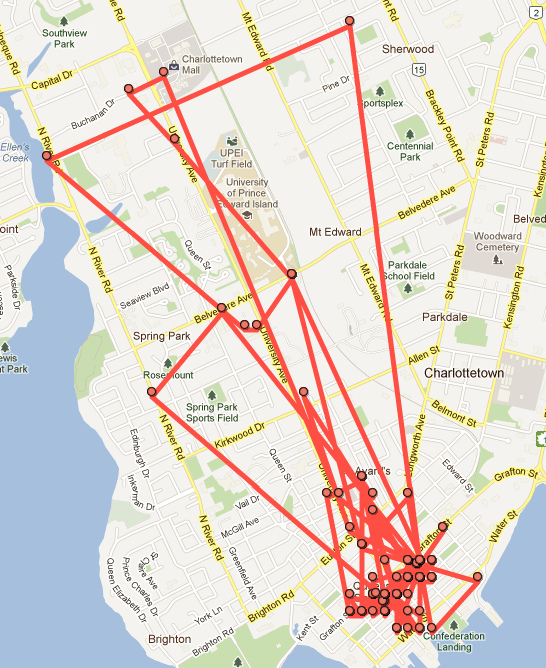
It’s rather obvious that the day-to-day path of my life is concentrated in a narrow band along Richmond Street that connects home to office, with occasional field trips to the inner suburbs.
In an interview with CBC this weekend Premier Robert Ghiz suggested that the government was leaning toward appointed rather than elected school trustees for the new single English-language school board here on Prince Edward Island. His language was fuzzy enough that this statement appeared to be more of a trial balloon than a sneak peek at a decision already made; it’s an idea, however, that flies in the face of the govenment’s own Education Government Commission, which, in its final report, recommended that the system of electing trustees remain in place:
For those supporting elections, school boards are more than a service delivery arm of the provincial government, as would be implied by an appointed board. They are one of the core institutions of local democracy, with roots in the earliest years of our society. It is notable that in many areas of public policy, there is growing recognition of the importance of being broadly representative and of hearing diverse points of view, as exemplified by processes such as citizen assemblies. Elected boards bring this potential for a broad external perspective to the education system.
As well, elected boards offer Islanders important opportunities for civic engagement, often leading to further involvement in public life. Both the Advisory Council on the Status of Women and the Coalition for Women in Government highlighted in their submissions, the accessibility of school board seats to women and the greater representation of women on school boards than on other governing bodies.
In the normal course of affairs I wouldn’t make comment on the Premier’s trial balloon, but happenstance meant that today I am the ranking available spokesperson for the PEI Home and School Federation and so far this has resulted in a phone interview with a reporter from the Eastern Graphic and a television interview with Compass’s Kerry Campbell.
This all meant that not only did I have to gather my thoughts more deeply on the issue, but also that I had to find that sweet spot on the Venn diagram where my own private thoughts overlap with what might be called “the voice of parents on Prince Edward Island,” which is an inexact thing to nail down at the best of times, and in this case we’ve not had an opportunity to discuss the issue as a group (our Annual General Meeting at the PEI Home and School Federation is this Saturday, and I’m sure this topic will be actively discussed there).
Here, then, is what I came up with:
- Participating in the school trustee process, both as electors and as trustees, is one of several routes by which parents, for more than a hundred years, have been able to engage with the education system.
- If participation in this process has been diminishing of late — voter turnout in school trustee elections has been abysmal in recent elections — that is not necessarily an indication that the fundamental notion of elected trustees is broken (and the Commission, indeed, addresses this point with recommendations related to adjusting and broadening the electoral process, educating the electorate and investing in trustee development).
- Recent experiences at the Eastern School District are not systemic, and certainly not a reason for abandoning democratic participation in the selection of trustees.
- The Premier’s suggestion that there might be those who, while not willing to stand for trustee in an election, would be willing to be appointed, gives lie to the heart of the democratic process itself.
- The Education Governance Commission was universally regarded as a group with solid research, broad deliberation and a thoughtful report; we should consider their recommendations seriously and if we are to set one or more of them aside, especially those as substantial as moving away from elected trustees, this shouldn’t be done without time for additional discussion and deliberation.
Being interviewed about something, especially when you’re representing as broad a group as “Island parents,” isn’t an easy task, and, truth be told, I have no idea whether or not I managed to clearly communicate any or all of the above in my interview with Kerry or with the Graphic.
Some refinement of this weekend’s draft of a Charlottetown Subway Map. Switch from Arial Narrow to Futura for the body type; changed the name of the Nassau station to CBC to accommodate Kerry Campbell; moved the QEH stop from “future expansion” to the present day (why not just get it done!). Some design refinements as well, stealing some graphic inspiration from the Copenhagen Metro Map (in additional to the original design inspiration, of course, from Beck’s original Tube Map with its limitation of 45 and 90 degree angles).
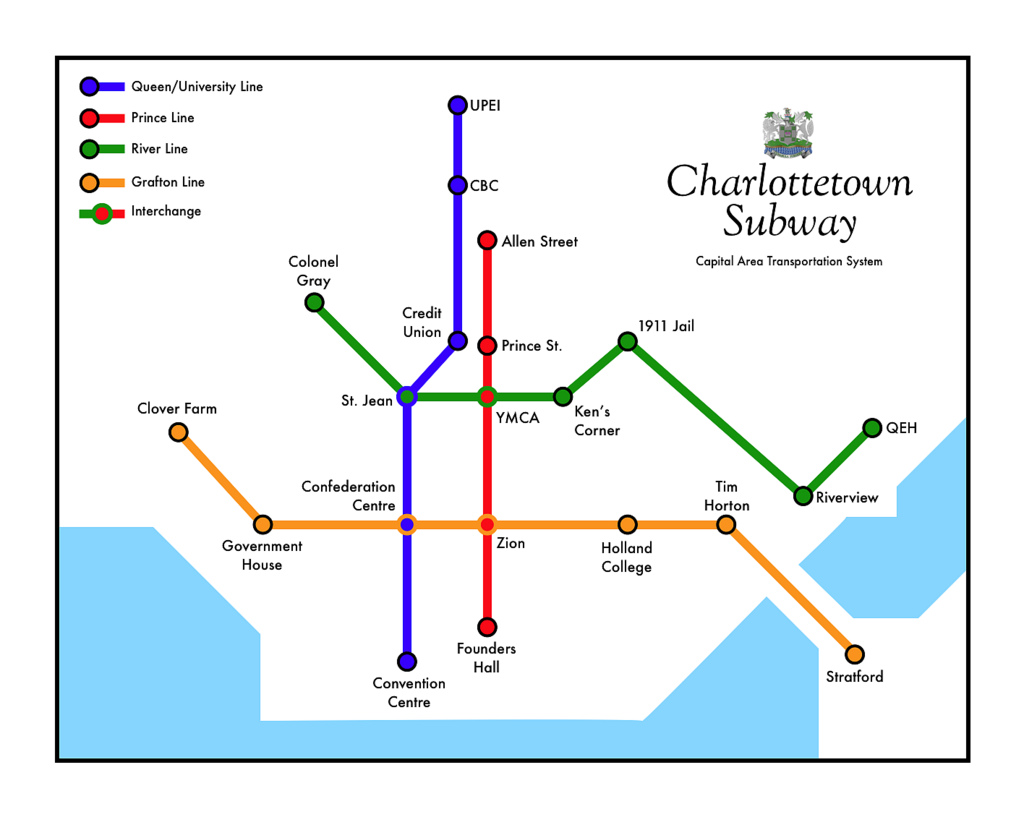
I’ve created a large suitable-for-printing version of the map if you seek to entertain and delight your friends and family.
Now that I have figured out imposition, I’m moving on to make a sample book, using some of the letterpress cuts loaned to me by Ian Scott.
Although I’m doing this mostly as a test, I did try to select a nice cross-section of letterpress cuts: everything from the Red Cross to Dow’s to 7up. Next step: print it.
Inspired by Ian’s musing about the difficulty that machines have an automatically identifying photographs of him, I gave the Face.com demo a try with a photo I took of myself, and here’s the result:
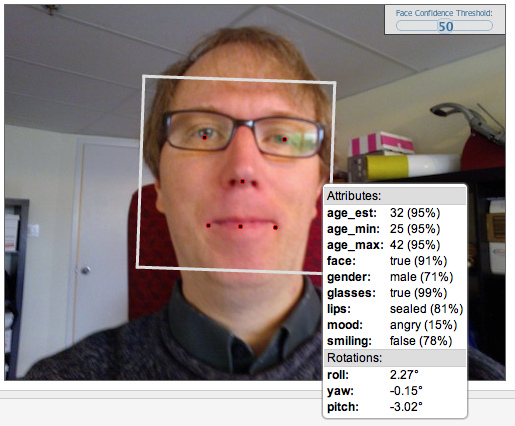
My possible age range, according to Face.com, with 95% confidence, is 25 to 42. Given my recently-turned-46-ness, this can only be good. It got my denger, glasses-wearing, lips and mood correct (I am about 15% angry right now!).
You can try the Face.com demo yourself: it’s not immediately clear how you do this, but it’s actually pretty simple. Just find a recent photo with your face in it on your computer, then click on the “Upload Photo” link on the lefthand side of the demo and select the photo; then click “Call Method” and once the process is complete, hover your mouse over the face it’s likely detected for your stats.
While this is an impressive feat of technology, I hope your creepiness-sensors are going off as you ponder the possibilities here: all those photos you’re uploading to Facebook — it’s now easy for Facebook to automatically detect the age, gender and mood of your friends and family and use this to further hone your demographic slot. “Oh,” says the machine, “Ann’s got a grandson now — let’s start promoting Toys-R-Us to her!”.
Some things you just have to get out of your system, and the long weekend is a good opportunity to do so.
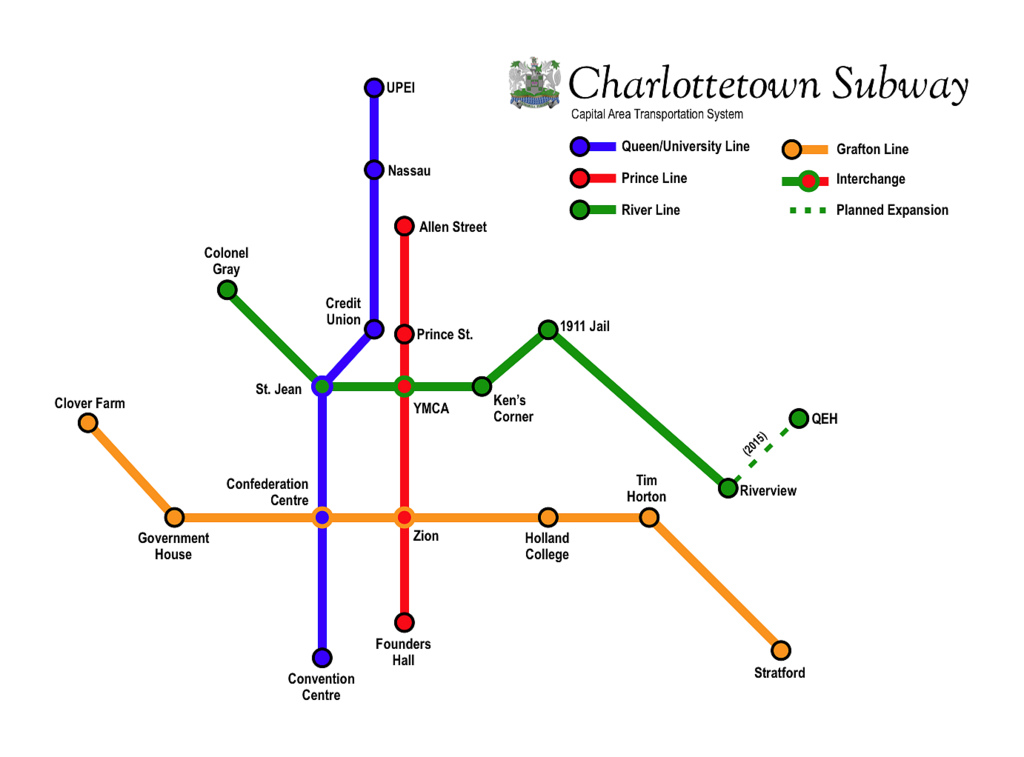
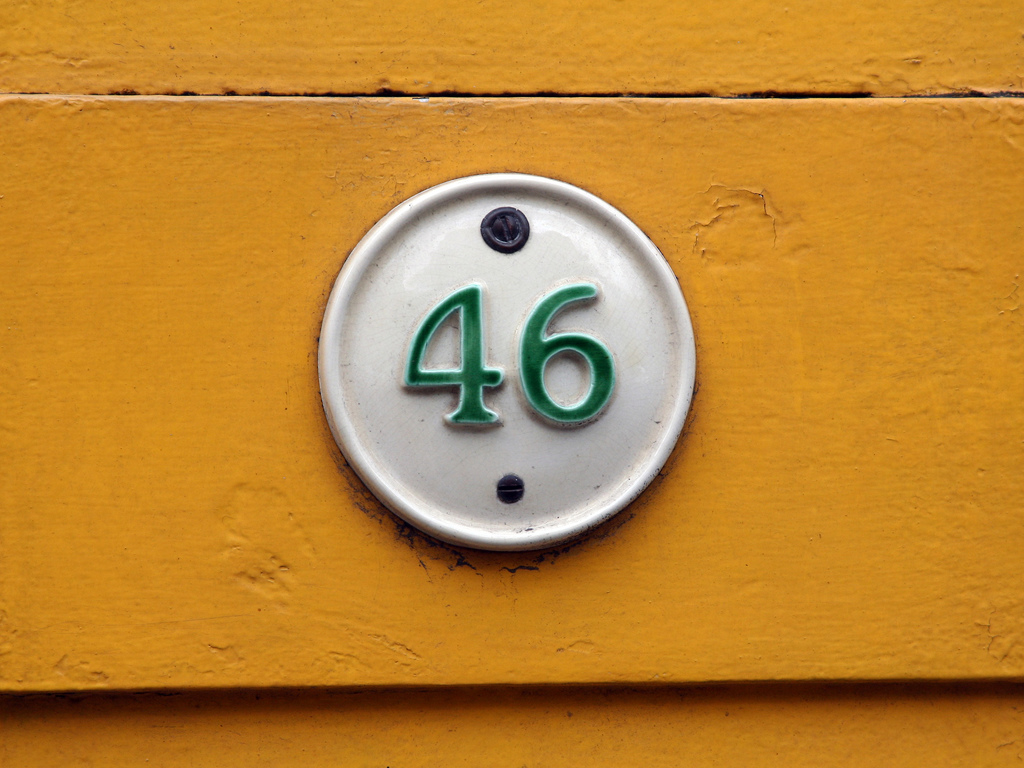
I turn 46 years old today (photo from Leo Reynolds).
I’ve been writing long enough in this space that I have record here of turning 36, ten years ago, where I wrote, in part:
Thirty-six is one of those strange non-ages, far enough from 30 and 40 to be not closely associated with either. It is three times twelve, which places me 24 years past teenagehood. It’s also half way to 72, which, statistically, places me half way through life.
I’d have to be pretty lucky — an extra 20 years of life lucky — to claim “I’m halfway to death” now. I would, however, like to claim that 46 isn’t anywhere near age 50.
In 2004 I was in New York City in my birthday; a year later I was in New Hampshire. In 2006 I turned 40 and was still claiming that I was halfway to death.
In 2007 it was Gong Bao Thursday and I was blogging prolifically and discovering that I may not actually be from Earth.
In 2010 I was off to New Hampshire again, with no mention of age at all.
And last year, I was back to prattling on about the halfway to death thing.
This year I’m happy and healthy and sitting a block from home here in Charlottetown as I write this. It’s the 20th birthday I’ve celebrated in Prince Edward Island — somewhere in the last few years PEI became the place I’d called “home” the longest of all those places I’ve lived so far.
Simply to ensure that the day isn’t completely free of waxing about age, I’ll note that my father turned 46 years old in 1983; I was finishing up grade 11 at Waterdown High School that year and Pierre Trudeau was Canadian Prime Minister and Ronald Reagan was U.S. President. Oliver will turn 46 in 2046, which seems, to me and likely to him, like an eternity away (if, touch wood, I am still alive, I will be 80).
I told Oliver earlier in the week that I wanted a birthday party with talking fish and roller coasters. I was joking, but I think he took me seriously, so I’m excited to see what’s in store when I get home tonight.
I’ve been thinking of printing a short book on my Golding Jobber letterpress. Its capacity to print materials up to 12 by 18 inches means that I could print multiple book pages on a single sheet of paper that would then be folded and cut into “signatures” that would then be bound together to make the book.
The first thing I needed to understand was how imposition works — how the pages get arranged for printing so that when the sheet they are printed on is folded and cut the pages end up in the right order.
So I started by making a mock-up out of a sheet of letter-sized paper. I folded the sheet twice, then numbered the pages as they would appear once the sheet was cut along the short edge:
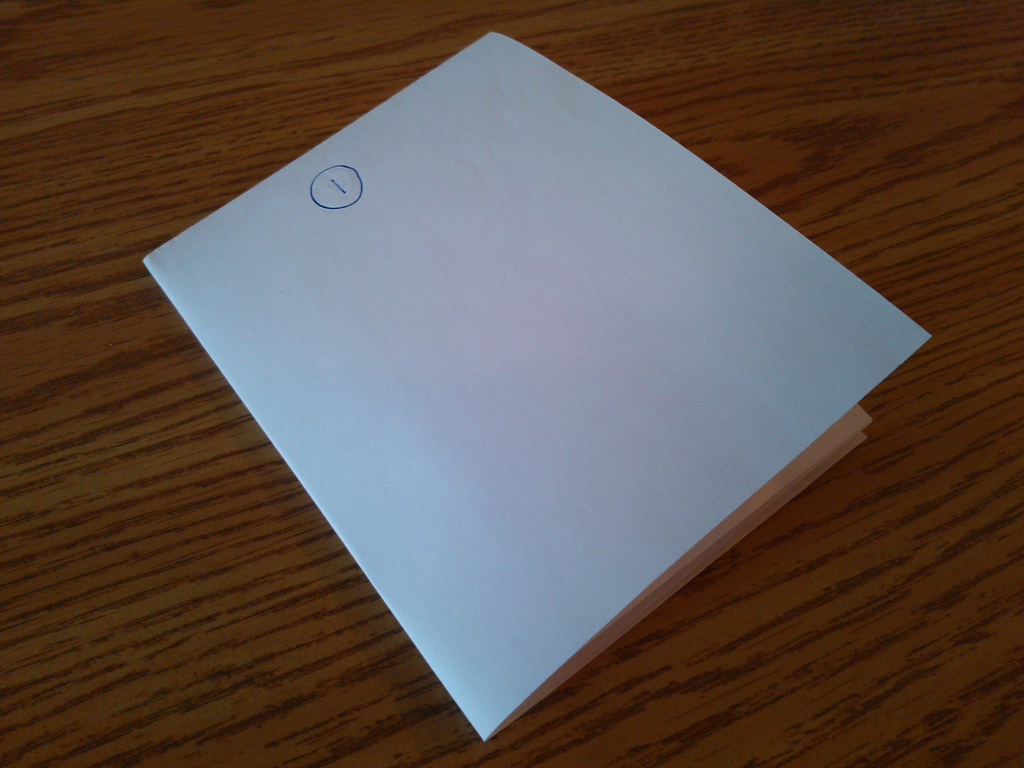
When I unfolded the mock-up, this is how it looked:
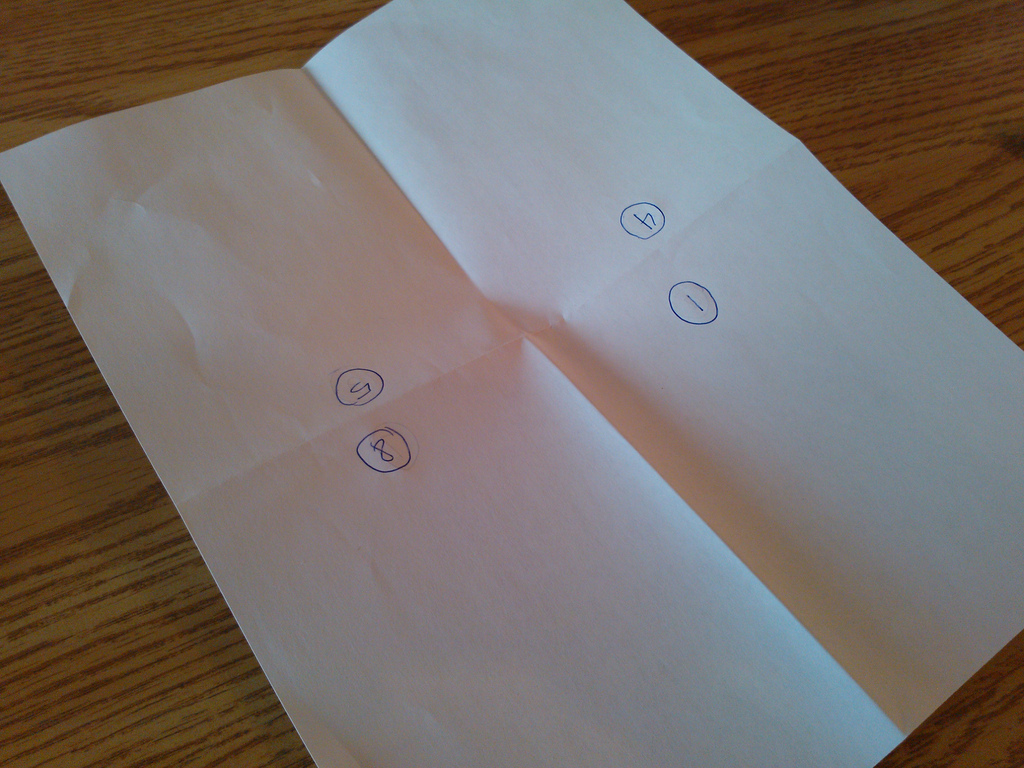
Consulting The Compositor’s Handbook, a very helpful 1854 book that’s been digitized from the collection of Oxford University, I turned to the section on imposition that concerned the quarto — a sheet folded twice to make 8 pages of a book — and found the layout was supposed to look like this:
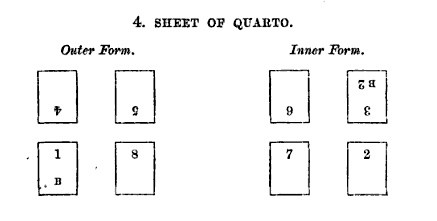
That didn’t look like my mockup — it was reverse — and I spent a lot of time making new mock-ups to see if I’d done something wrong. Try as I may — it might be clear that I do not excel in two-dimensional thinking — I couldn’t figure out what I was doing wrong.
Fortunately when I got home last night there was a copy of General Printing: An Illustrated Guide to Letterpress Printing waiting for me, ordered a few days ago. In the imposition section of this book was a very helpful illustration that solved my perceptual issue:
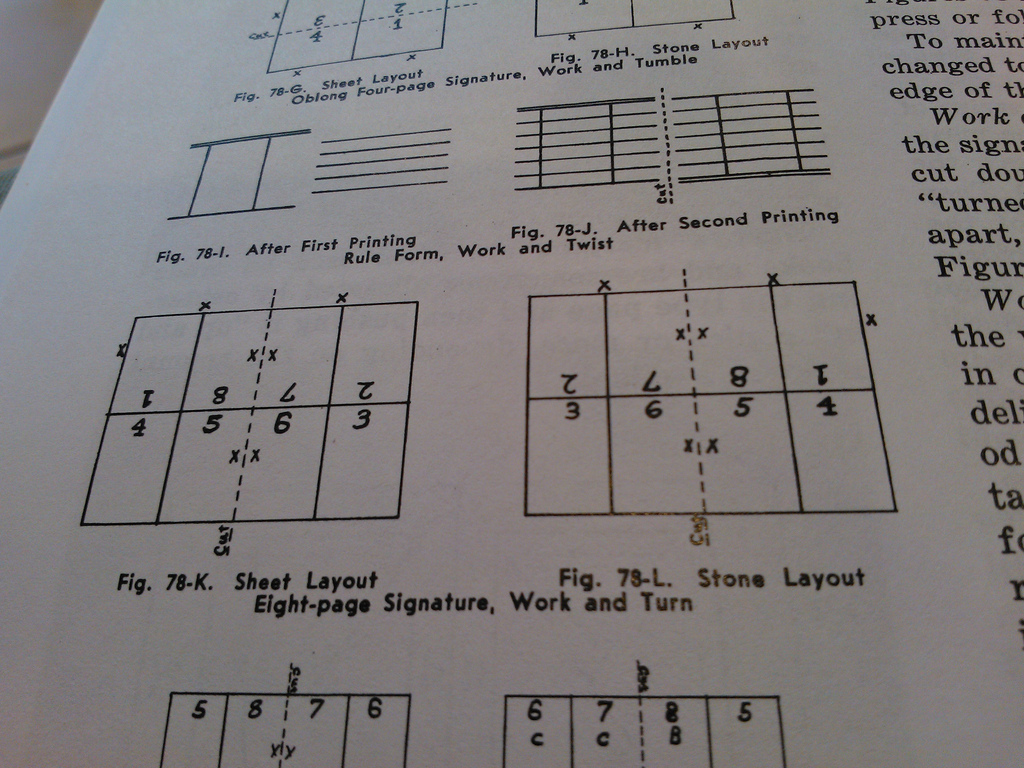
Note how there’s a figure illustrating “sheet layout” and another illustrating “stone layout.” My problem was that I was confusing the two.
Sheet layout is “how the sheet will look once it is printed” and so it’s laid out just like my mock-up. Stone layout is “how you need to lay the pages out for printing” which is right-left reverse of sheet layout because — and herein lies the heart of my ignorance — when you print something on a printing press, left becomes right and vice versa.
You’d think I would have figured out this out by now, what with two years of setting type right to left. But, like I said, thinking in more than a single dimension is not my strong suit.
Now, on to the next step of book-making.
 I am
I am